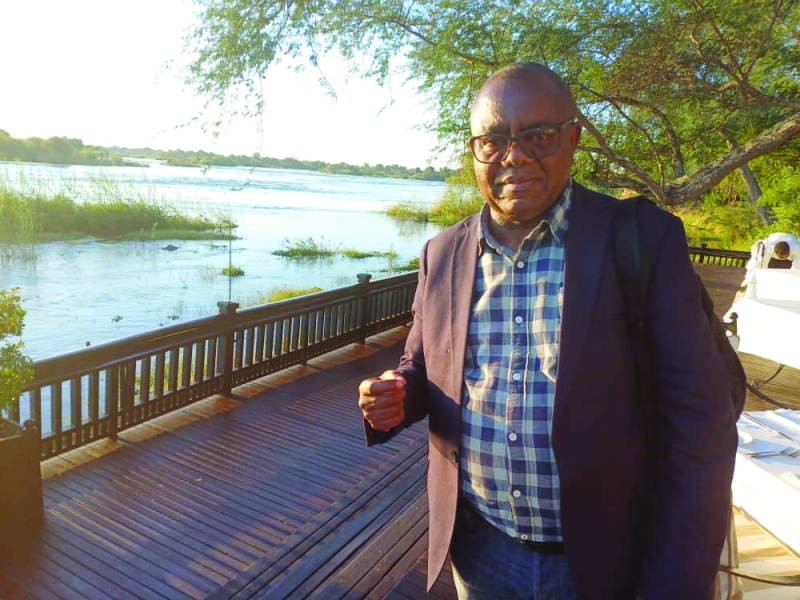Reuniting with ancestors
Ryder Gabathuse | Monday June 10, 2024 08:00


LIVINGSTONE, ZAMBIA: Visiting Zambia, the home of the Chipolopolo senior national football team, has always had a special bearing on my life. It’s a place I consider my ‘second home’, albeit I have no idea where my maternal grandfather really originated, save to say, Zambia. My mother’s explanation has been “e ne le Morotsi (He was Lozi).”
I remember my peevish mother’s eyes abruptly wetting with the waterworks a few years ago when BIUST (Botswana International University of Science and Technology) was set up as families were advised to exhume the remains of their loved ones from the area where the university was to be built for further interment elsewhere. My mother and her relatives failed to locate Karabo’s grave in the area near Lecheng where my mother was partly raised after relocating from old Palapye in Malaka. The search for the old man’s final resting place could not bear fruit until they literally gave up. I hear my mother’s relatives moved around trees and even rolled away boulders in the area around BIUST and they came up with nothing. Typically, a stone or mound marks graves, but for Karabo, there was no visible mark or whatsoever to identify his grave. This is a clear sign as people concentrated on new developments; they probably abandoned the remains of their ancestors. Most of Karabo’s other relatives had relocated to Palapye from Malaka or old Palapye as it is called.
Now, when I travelled to Zambia at the behest of the Botswana government last week, it was a blessing to me as I knew I would hear Lozi again, a language that was spoken by the old man. Karabo is part of the many migrants who settled in Botswana pre-independence after they came to work at various places including at the Botswana Railways’ forerunner, National Railways of Zimbabwe (NRZ) where the old man reportedly worked as a labourer and never returned to his native country. The BR would later employ his son, many years after his father’s passing.
I have learnt that Balozi can easily be identifiable through huge noses like mine, which I believe I inherited from my mother. My two uncles, (now both late), also bore huge noses. I remember recently, a relative, Rose Mafhoko, after seeing one of the pictures I had posted on my WhatsApp status in which I had posed with my sister and mother, she quickly pointed out that it’s only the nose (huge) that connected us. That is the legacy left by the old man.
So, besides work that I performed in Livingstone, my interest was listening to Balozi or Silozi as they spoke and this simply connected me with my ancestors. Journals suggest that Silozi arose as a result of 18th and 19th century migrations. Silozi is one of the 72 languages spoken in Zambia now. As if it was by arrangement, my grandmother’s senior sister was married to another Lozi. At least, the old man survived up to the 1970s for us to appreciate the Zambian connections.
The first time proper I interacted with Balozi in Zambia was in 2003 when I had travelled to Angola by road via Zambia on a trip sponsored by the UNHCR (United Nations High Commissioner for Refugees). We were travelling with Angolan refugees to their native country ahead of a process whereupon they were to be repatriated after years of staying at the Dukwi Refugee camp.
We had spent about two days at the country’s capital city, Lusaka where our visas to Angola were processed. Our trip further took us to Mongu, Zambia’s Western Province capital where apparently most of the people spoke Silozi. This is where we met Angolan refugees destined home, via a UN hired flight. To many of the refugees in our team, it was a moment of reunion with their brothers and sisters they had not met over decades. Some were even feared dead as there was no form of communication or whatsoever for years. They broke into tears of joy upon realising that their family members were still alive and some even had children raised at the refugee camps. The families were separated by the Angolan civil war as they ran into the thickets of Angola for their dear lives.
At Mongu, a town touted as the home to Barotsi (people who speak a language derived in part from that of the Makololo, related to the South African Sesotho language). Serotsi is also partly spoken by some groups living in Kazungula in Botswana. The language sounds like a corrupted version of Setswana also.
At the Livingstone marketplace recently, I came to appreciate that Serotsi is widely spoken by the men and women who ply their trade there. As I deliberately spoke to them in Setswana, at least communication was not lost completely. This further strengthened my desire to dig deeper into my roots as language was not a barrier at all.
Even with this ease of communication, I could not suppress the desire to know exactly where Karabo originated. I felt the part when the Zambian President Hakainde Hichilema officially opened the inaugural Kavango Zambezi Trans Frontier Conservation Area Heads of State Summit last Friday as he shouted: “One Zambia, One Nation!” Unfortunately, I will still prefer to keep my Botswana for now, but my curiosity will never vanish. And for the Zambian trip, it was more like a reunion with my ancestors.
